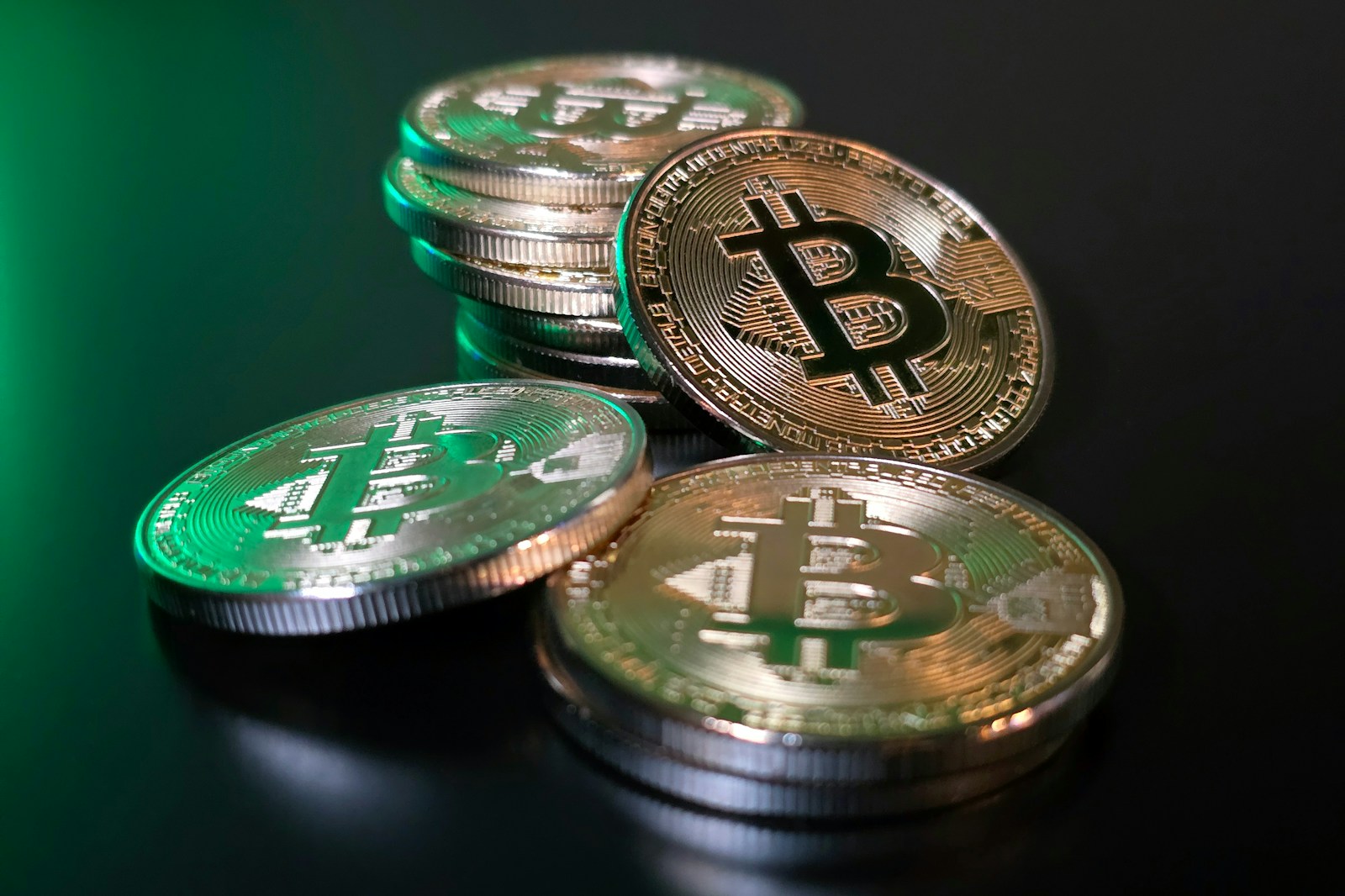NFTs provide a practical way to convert physical items into unique digital certificates, enabling ownership and provenance tracking on distributed ledgers. By assigning a non-fungible token to a tangible object like real estate or artwork, you create a verifiable and tamper-resistant record that can be transferred securely without intermediaries.
This approach enhances both security and transparency, reducing fraud risks commonly associated with traditional paper-based documentation. For example, fractionalizing high-value commodities into multiple tokens allows broader participation and liquidity in markets that were previously inaccessible for many investors.
Beyond collectibles, tokenized representations offer increased utility by embedding programmable features such as royalties or usage rights directly into the digital record. This capability transforms simple ownership into dynamic contracts that evolve with each transaction while maintaining an immutable history.
Understanding how to leverage these cryptographically secured tokens can open new opportunities for managing diverse holdings in a fully digital environment. Whether dealing with real-world property or intangible rights, adopting this technology streamlines verification processes and enables seamless global transfers with minimal friction.
Tokenization: representing assets on blockchain
To effectively convert physical and intangible items into a secure, tradable format, one must use distributed ledger technology. This approach allows for the creation of cryptographic tokens that correspond directly to real-world valuables such as property, commodities, or intellectual property rights. By doing so, ownership becomes transparent and transferable without intermediaries, enabling faster settlements and reducing fraud risks.
Various token standards facilitate different functionalities within this ecosystem. For instance, non-fungible tokens (NFTs) are ideal for unique collectibles or artworks since each token holds distinct metadata. Conversely, fungible tokens serve well for interchangeable goods like currencies or shares in a company. Both types contribute to expanding how industries leverage decentralized networks to represent tangible and intangible holdings digitally.
Technical Foundations and Use Cases
Distributed ledgers store data immutably across multiple nodes, ensuring that every transaction related to these digital certificates is recorded transparently. Security protocols including cryptographic hashing and consensus mechanisms prevent unauthorized modifications or double-spending attacks. For example, platforms like Ethereum support smart contracts that automate ownership transfers once predefined conditions are met.
Practical implementations include fractional ownership of expensive properties where investors can purchase smaller stakes represented by tokens rather than acquiring entire buildings outright. Similarly, supply chain tracking uses tokenized representations of shipments allowing stakeholders to verify provenance instantly via the network. Utility tokens also exist to grant holders access to specific services within an ecosystem, such as decentralized applications or voting rights.
- Real Estate: Tokenizing real estate enables liquidity by breaking down large investments into smaller shares accessible globally.
- Art & Collectibles: NFTs certify authenticity and provenance uniquely tied to individual pieces.
- Financial Instruments: Digitized securities can be traded on secondary markets with reduced friction and compliance automation.
The convergence of cryptographic techniques with legal frameworks is advancing regulatory acceptance worldwide. Projects incorporating KYC/AML processes ensure participants meet compliance standards while maintaining privacy through zero-knowledge proofs in some instances. This balance promotes broader adoption without compromising security standards critical for protecting stakeholders’ interests.
Certain challenges remain regarding interoperability between diverse platforms and ensuring user-friendly interfaces for mainstream audiences unfamiliar with blockchain intricacies. However, ongoing developments aim at creating standardized protocols that simplify integrating token-based ecosystems with existing financial infrastructure while preserving decentralization benefits.
In conclusion, transforming physical objects into verifiable electronic equivalents on distributed networks empowers multiple sectors by enhancing transparency, liquidity, and efficiency. As innovation continues refining these solutions alongside evolving regulations, individuals and institutions gain new opportunities to interact securely with previously illiquid resources through accessible technological means.
How to tokenize physical assets
Begin by selecting the tangible item you want to digitize and verify its legal ownership and authenticity. This ensures that the rights linked to the real-world property or object are clear, preventing future disputes. Next, choose an appropriate platform that supports the creation of cryptographic tokens compliant with regulatory standards, such as those offering security token frameworks or NFT minting capabilities.
After confirming ownership and platform choice, create a digital representation of the asset through a unique cryptographic token. This process involves encoding metadata about the physical item–such as provenance, condition, and valuation–into a non-fungible token (NFT) or a security token, depending on whether you aim for utility or investment purposes. Smart contracts embedded within these tokens automate transaction rules and enforce compliance.
Steps to ensure secure and compliant digitization
Integrate identity verification protocols (KYC/AML) within the token issuance workflow to comply with jurisdictional regulations. Use decentralized ledgers that offer transparency and immutability while enabling controlled access when necessary. For example, real estate properties have been successfully fractionalized via security tokens on platforms like Polymath or Securitize, allowing investors to hold legally recognized shares without traditional intermediaries.
The utility of such tokens extends beyond mere ownership proofs; they can facilitate automated dividend distribution, voting rights in governance structures, or even access to services linked with the underlying item. Consider collectibles converted into NFTs on Ethereum-based networks; here, rarity traits encoded in metadata enhance market value and provide verifiable scarcity.
Maintain detailed off-chain records synchronized with on-chain data to resolve discrepancies between the physical asset’s status and its digital counterpart. Employ IoT devices where feasible–for instance, tracking high-value equipment–to update condition reports automatically. This hybrid approach strengthens confidence among stakeholders by reducing information asymmetry.
Finally, enable secondary market liquidity by listing these tokens on compatible exchanges or peer-to-peer platforms designed for digital securities or NFTs. Continuous monitoring of smart contract performance and periodic audits safeguard against vulnerabilities or protocol breaches. In sum, combining robust legal groundwork with advanced technological tools creates efficient pathways for transforming physical possessions into tradable digital units that preserve value and enhance accessibility.
Legal challenges in token issuance
Issuing tokens on a decentralized ledger often triggers complex regulatory scrutiny, especially when these tokens possess characteristics akin to securities. Distinguishing between utility tokens and security tokens is critical because the latter fall under stringent financial regulations. For instance, a token that grants holders profit rights or dividends may be classified as a security, requiring compliance with registration and disclosure obligations under laws such as the U.S. Securities Act of 1933. Failure to comply can result in severe penalties, as demonstrated by several enforcement actions against unauthorized initial coin offerings (ICOs).
NFTs, despite their unique nature as non-fungible digital collectibles, also face legal ambiguity depending on how they are marketed and used. If an NFT is sold primarily for speculative investment or promises future value appreciation, regulators might consider it a security. Conversely, NFTs purely representing digital art or real-world items without investment expectations generally encounter fewer restrictions. The challenge lies in the evolving interpretation of what constitutes a utility versus security function within these tokens.
Regulatory classification and compliance complexity
One major obstacle arises from inconsistent definitions across jurisdictions regarding token types and their legal treatment. While some countries adopt clear frameworks distinguishing utility tokens–designed for platform access–from those linked to ownership stakes or profit-sharing, others have ambiguous or absent regulations. This inconsistency complicates cross-border offerings and demands tailored legal approaches for each market involved.
Additionally, accurately coding token functionalities on distributed ledgers is vital for meeting regulatory expectations. Smart contracts must embed precise mechanisms reflecting token purpose–whether access rights, governance participation, or revenue sharing–to support legal arguments about their status. For example, projects leveraging programmable features to automatically enforce compliance rules (like transfer restrictions) showcase technical methods to address regulatory risks proactively.
Choosing token standards
Selecting the appropriate protocol for asset digitization requires understanding the nature of what is being converted and its intended interaction within decentralized networks. For instance, when dealing with utility tokens, which grant access to services or platforms, standards like ERC-20 remain a solid choice due to their simplicity and broad compatibility. These fungible tokens excel in representing divisible rights or credits and benefit from mature tooling and widespread adoption.
Conversely, non-fungible items that correspond to unique real-world objects or collectibles demand protocols supporting individuality and provenance tracking. The ERC-721 standard stands out here by enabling creation of NFTs that encapsulate distinct properties, making it ideal for digital art, certificates, or property deeds. Projects leveraging this standard include prominent marketplaces such as OpenSea, where each token distinctly identifies an exclusive item.
Security considerations often dictate whether a project should utilize specialized frameworks tailored to regulated financial instruments. Security tokens must comply with compliance requirements including transfer restrictions and investor eligibility verification. Standards like ERC-1400 integrate these features directly into token logic, offering modularity for partitioned ownership and enhanced transparency. For example, Polymath’s implementation demonstrates how embedding regulatory rules at the smart contract level mitigates legal risks while maintaining blockchain benefits.
Hybrid models combining fungible and non-fungible characteristics have emerged to address complex use cases involving fractional ownership or layered utility. The ERC-1155 standard enables batching multiple token types within a single contract, optimizing gas costs and simplifying management. This approach suits scenarios such as gaming ecosystems where players hold both generic currencies and unique items simultaneously – Blizzard Entertainment’s integration of similar mechanics showcases practical application.
When digitizing physical commodities like real estate or precious metals, interoperability with external data sources becomes crucial for ensuring accurate representation throughout the asset lifecycle. Standards that facilitate integration with oracles enable real-time updates on valuation changes or ownership transfers off-chain. Chainlink’s oracle network exemplifies how external information can be securely fed into smart contracts adhering to selected protocols, thereby maintaining up-to-date records reflecting actual conditions.
Ultimately, evaluation should balance technical capabilities with ecosystem support and regulatory alignment specific to the underlying entity’s characteristics. Experimentation through testnets followed by gradual deployment helps verify performance under realistic conditions while ensuring compliance frameworks are respected. By methodically assessing each standard’s feature set against project objectives–whether focused on fungibility, uniqueness, governance constraints, or cross-platform operability–developers can confidently select architectures that deliver robust digitized representations aligned with stakeholder expectations.
Managing Token Liquidity Options: Strategic Insights and Future Directions
Optimizing token liquidity requires a balanced approach that leverages utility-driven mechanisms, including decentralized exchanges (DEXs), automated market makers (AMMs), and cross-chain bridges. The interplay between fungible tokens and non-fungible tokens (NFTs) highlights how fractional ownership and programmable rights can enhance liquidity while preserving unique value propositions.
Real-world applications demonstrate that integrating security protocols, such as smart contract audits and compliance layers, mitigates risks associated with rapid token movement. This ensures sustainable liquidity without compromising investor protection or network integrity.
Key Considerations for Enhancing Liquidity
- Utility-focused design: Tokens that embed clear usage scenarios within their ecosystems tend to maintain higher liquidity through active circulation rather than speculative holding.
- NFT fractionalization: Breaking down high-value digital collectibles into tradable shares increases market participation and unlocks new liquidity pools.
- Bridging real-world value: Linking token supply to tangible goods or services improves confidence and broadens appeal beyond purely speculative markets.
- Security standards: Employing multi-layered security practices reduces vulnerabilities in smart contracts, especially when enabling complex liquidity operations like staking or yield farming.
The Road Ahead: Innovations Shaping Liquidity Management
The evolution of digital securities protocols promises seamless integration between regulatory compliance and open liquidity frameworks. Emerging Layer-2 solutions will further reduce transaction costs, enabling micro-liquidity strategies previously unattainable on main chains.
Moreover, utility tokens embedded within interoperable ecosystems will drive more dynamic market behaviors by incentivizing continuous participation rather than passive holding. NFT marketplaces are experimenting with hybrid models combining auction-based sales with instant liquidity pools, illustrating practical pathways to balance rarity and tradability.
By thoughtfully aligning technological capabilities with user-centric design principles, the future of token circulation is poised to support robust economic models bridging virtual innovations with real-world demand–ultimately crafting a more accessible and secure financial frontier for all participants.





